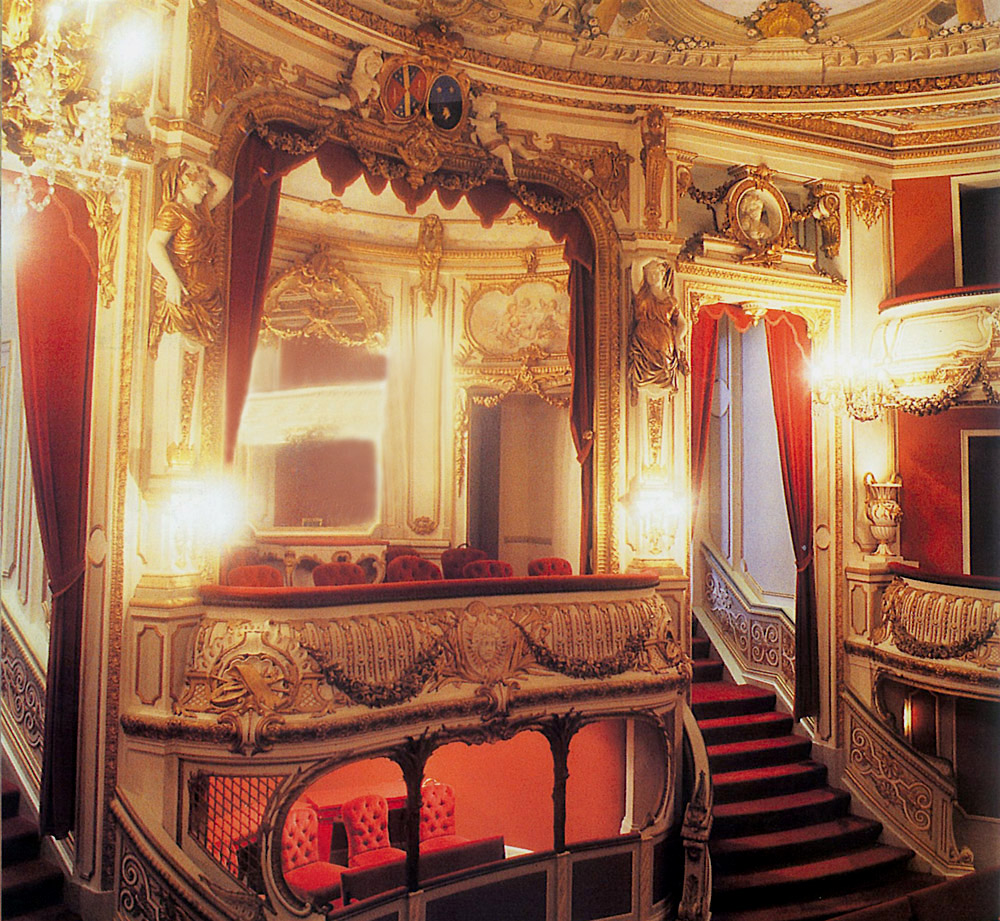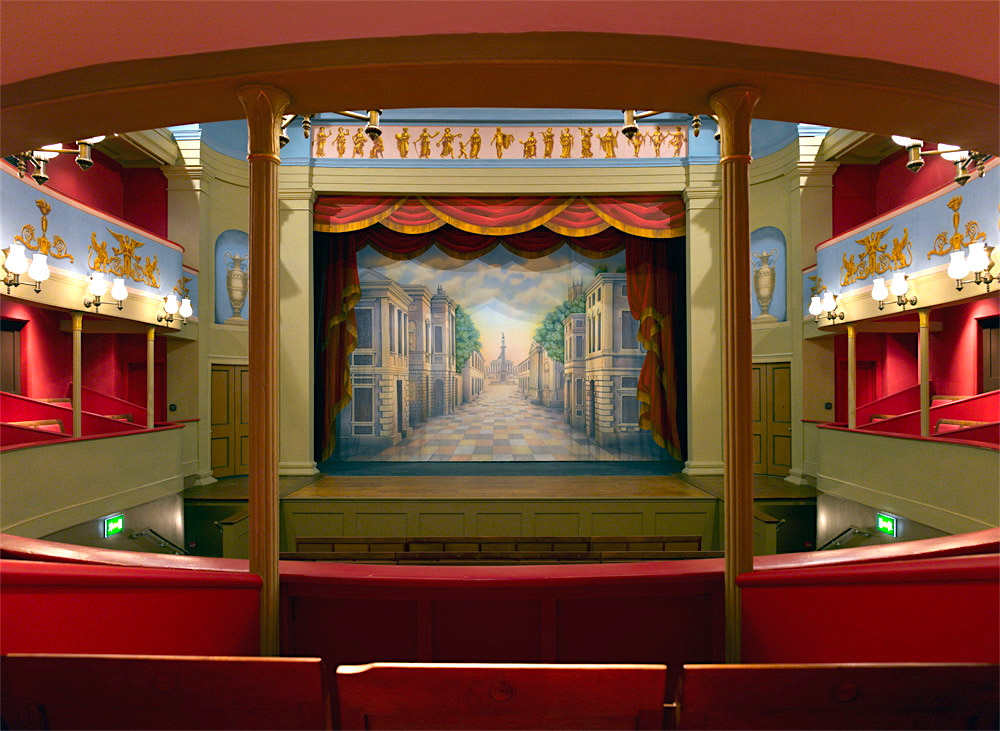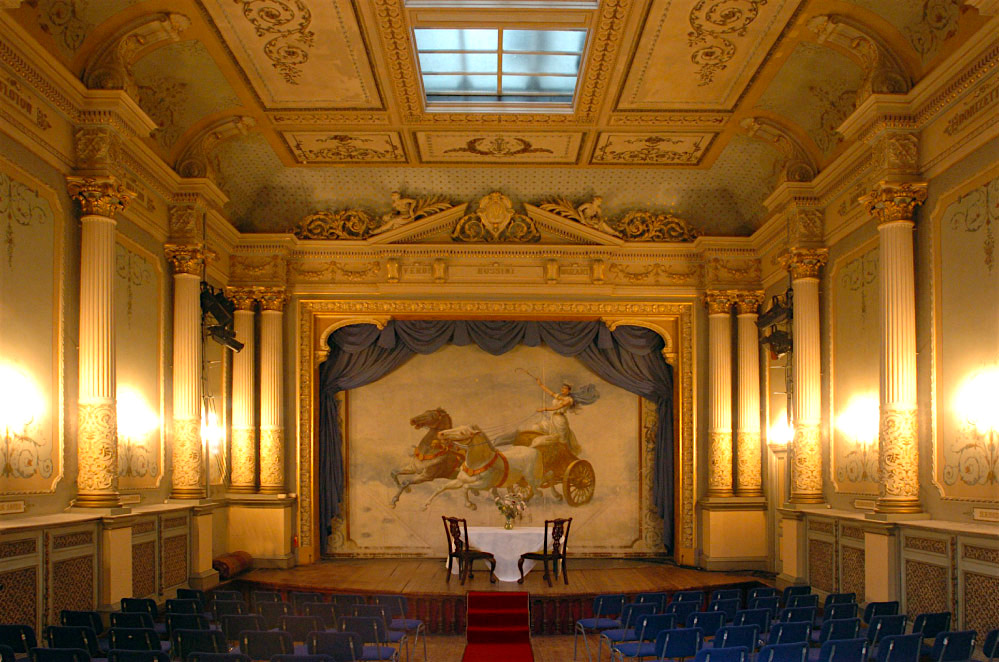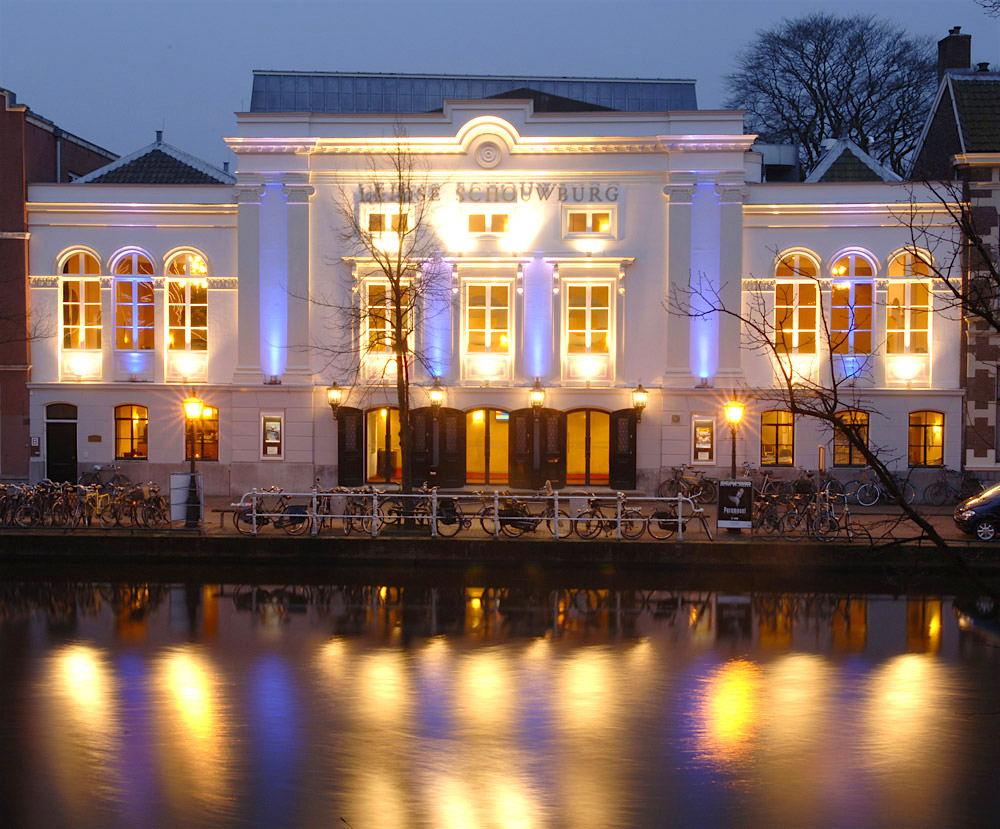Renowned architects have made them their individual masterpiece and often theatres and opera houses are named after their talented creators. Art and culture lovers not seldom go to great lengths to visit these awe-inspiring edifices and to inspect every detail of their often sumptuous and lavishly decorated interior. At best, admirers become part of a sublime performance. Even a trip halfway around the world does not seem to deter the truly addicted.
Embarking on a journey of theatre-sightseeing based on a pre-selection of venues is a possibility provided by The European Route of Historic Theatres: 8 routes including 22 countries have been compiled not merely to facilitate users’ choice but also to support better planning, help deepen the experience and to promote the around 120 member venues. In Europe alone, a vast number of formidable treasures are waiting to be lifted. Each route combines about twelve theatres and offers a pleasant journey taking roughly a week.

Théâtre du château in Chimay/Belgium had been commissioned in 1861 by Joseph II, 16th Prince of Chimay. His architect, the Frenchman Charles-Antoine Cambon, brought with him old plans of the first theatre built at Fontainebleau – which had burned to the ground. Thus, Cambon recreated it in Chimay, where the new site was inaugurated in 1863.
Impressive constructions, opulently gilded ornaments, refined trompe-l’oeil backdrops, velvet-upholstered seats and festively twinkling chandeliers may exude the most solemn of ambiences. Yet, equally captivating moments are to be had in the less elaborate venues true to their style. Be they spacious and airy or cozy and private, urban or rural, famous or the solitary hidden gem one jealously guards so as no-one else would wear off its beauty: theatres are places for visitors to let their thoughts roam freely and, perhaps, to revive their memories of triumphant performances once witnessed and never forgotten.
Alive with music and play and full of applause or shrouded in a contemplative silence: equipped with the suitable mindset, a tour of theatres is a rewarding enterprise. One of the 8 options on offer is the Channel Route, authentically named Visit Theatres. The complete stretch consists of theatres located in Glasgow, Richmond, Nottingham, Craig Y Nos, London, Bury St. Edmunds in Great Britain – and, across the Channel – in Leiden in the Netherlands and in Brussels, Ghent and Chimay in Belgium. The two „patent“ London theatres – Drury Lane and Covent Garden – should be on any visitor’s list, but lesser known ones up-country can prove just as enchanting.
Appetisers from the Visit Theatres menu

Theatre Royal of Bury St Edmunds in Suffolk was built in 1819 by the eminent neoclassical architect William Wilkins. It is the only surviving Regency theatre in the UK. Restored to its 1819 appearance, it offers a diverse programme of drama, dance, music and opera.

The Adelina Patti Theatre in Craig Y Nos
Italian soprano Adelina Patti was the primadonna assoluta of her time. England became her home, Covent Garden her realm. In 1878 she bought a country house near Swansea built in the style of a neo-Gothic castle. A private theatre was added – which was later preserved entirely. The floor of the auditorium can be elevated to stage level to form a continuous ballroom. The castle itself is now a hotel, surrounded by a 40-acre park.

The Schouwburg in Leiden only 20 minutes from Amsterdam is the first public theatre ever constructed in Holland. Its horseshoe-shaped auditorium is renowned for its superb acoustics and perspective. In the 1970’s, the theatre was saved from demolition. Today, some 90,000 spectators enjoy a variety of over 230 performances each year.
The European Route of Historic Theatres – „Perspectiv“ – is an association of historic theatres in Europe, whose endeavours are supported by the Culture Programme of the European Union.
The not-for-profit organisation with its seat on Berlin, was founded in 2003 to encourage and support the conservation and restoration of historic theatres, secure the continuous exchange between them and any party interested in them, initiate and support research and introduce the public to this European cultural heritage. The first route in the string, the German Route, was inaugurated in 2007. Today, 16 partners in 12 countries are active in the various projects.
All images ©European Route of Historic Theatres – Perspectiv.
